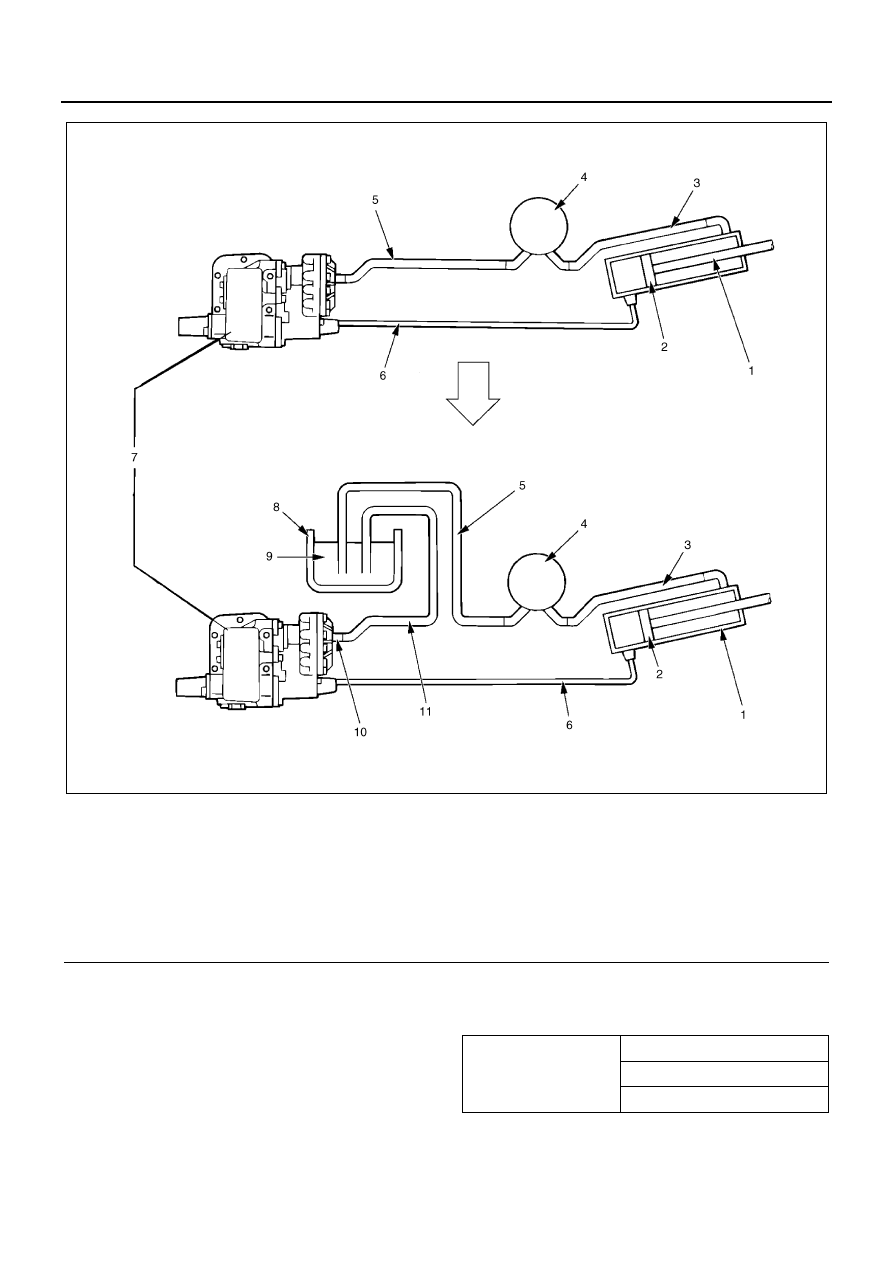Isuzu N-Series. Manual - part 4

POWER TAKE OFF 00-11
Preparation
1. Because removal of a spare tire makes work easier
according to a truck, previously check the truck.
2. Remove the intermediate fixed clip on the truck
side between the oil pump and the oil tank of the
low-pressure side hose and set the low-pressure
hose free.
3. Prepare a cleaned hydraulic operating fluid con-
tainer (a 20 L can will do), a funnel, hydraulic oper-
ating fluid, a test hose for a special tool, and a test
hose joint.
4. Prepare the hydraulic operating fluid of about 10 L
in the cleaned hydraulic operating fluid container.
Hydraulic Operating Fluid (Turbine Oil)
Notice:
Carefully control the prepared hydraulic operating fluid
so that dust or foreign matter will not be mixed in it. Be-
Legend
1. Hoist cylinder
7. PTO with oil pump
2. Piston
8. Hydraulic operating fluid container
3. Pipe
9. Hydraulic operating fluid
4. Oil tank
10. Test hose joint
5. Low-pressure hose
11. Test hose
6. High-pressure hose
NPA0023E
Manufactured by
ShinMaywa Indus-
tries Co., Ltd.
0 to 30
°C (86°F): VG32
20
°C (68°F) or more: VG56
less than 10
°C (50°F): VG22